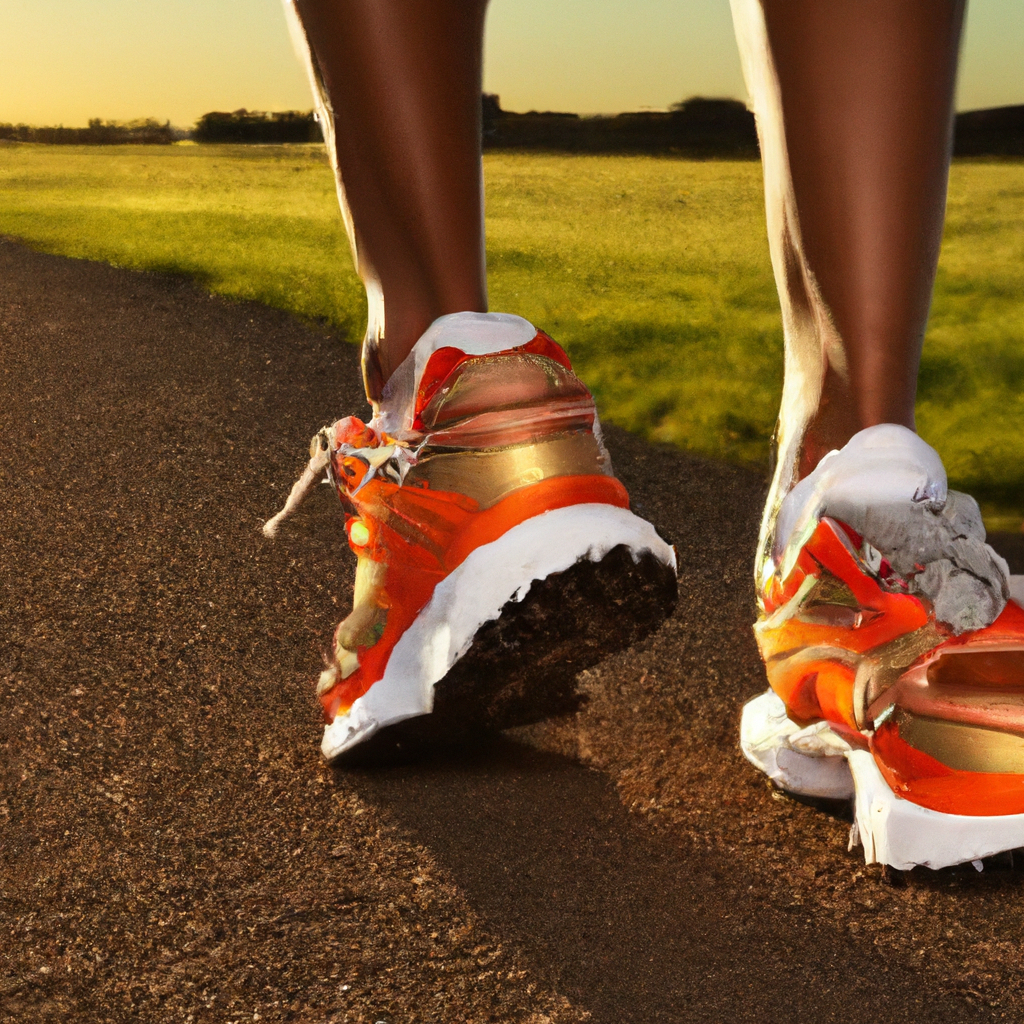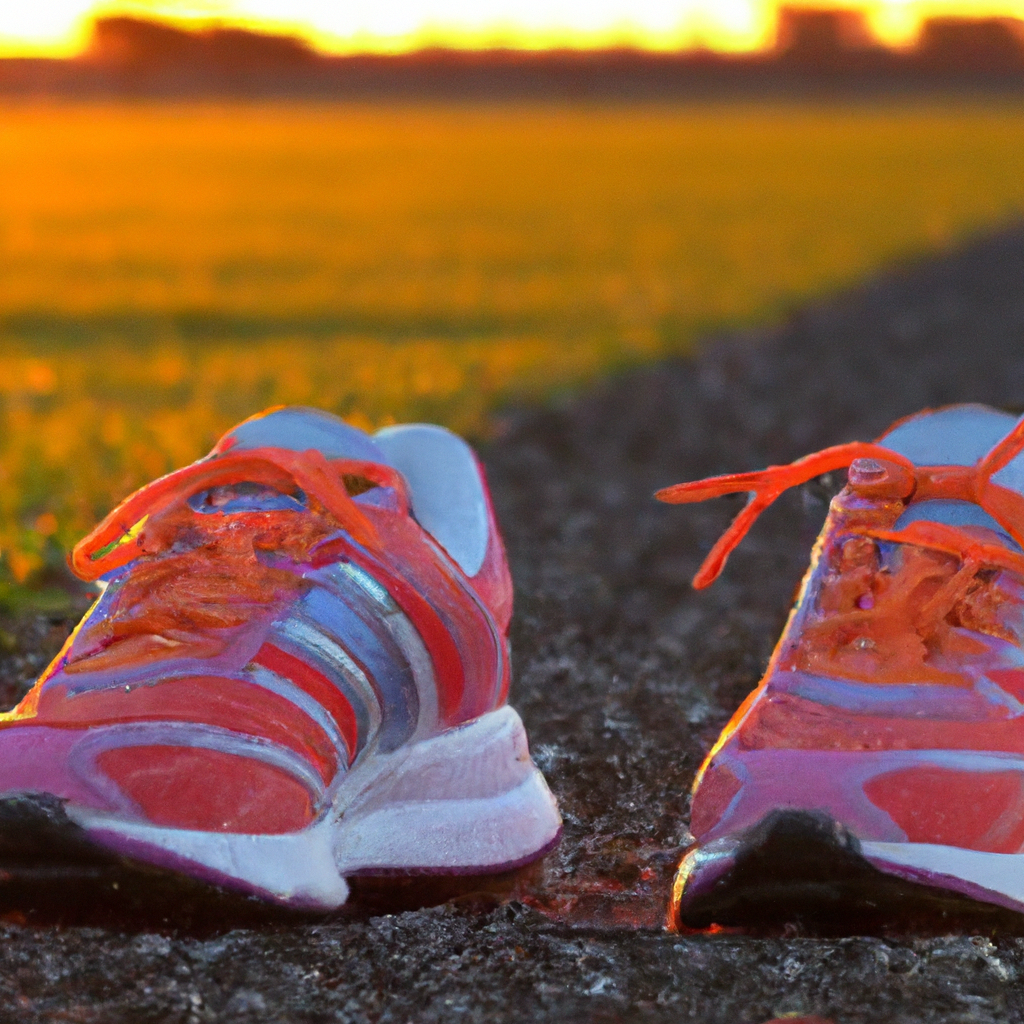Have you ever wondered if it’s more beneficial to walk at a quicker pace or for a longer duration? We often find ourselves striving to optimize our exercise routines, seeking the most effective way to stay fit and healthy. In this article, we will explore the advantages and considerations of walking faster versus walking longer, enabling you to make informed decisions about your daily walks. So lace up your sneakers and let’s embark on this journey to discover the most optimal walking strategy for you!
Benefits of walking faster
Increases cardiovascular fitness
Walking faster is a great way to increase your cardiovascular fitness. When you walk at a brisk pace, your heart rate goes up, and you start to breathe harder, which challenges your cardiovascular system. Regularly walking faster can improve your heart health, increase aerobic capacity, and enhance the efficiency of your heart and lungs.
Burns more calories
If your goal is to burn calories and lose weight, walking faster is a highly effective way to achieve that. When you increase your walking speed, you exert more energy, and as a result, you burn more calories. By walking faster, you can maximize your calorie expenditure and contribute to weight loss or weight maintenance.
Boosts metabolism
Walking at a faster pace can give your metabolism a significant boost. When you walk faster, your body requires more energy to perform the activity, which increases your metabolic rate. This elevated metabolism can continue even after you finish walking, allowing you to burn additional calories throughout the day.
Improves mood and mental health
Moving at a brisk pace while walking can have a positive impact on your mood and mental health. Engaging in faster walking increases the release of endorphins, which are chemicals in the brain that help reduce stress and improve overall feelings of well-being. Walking faster also stimulates blood circulation, delivering essential oxygen and nutrients to the brain and helping to improve cognitive function.
Benefits of walking longer
Improves endurance
Walking longer distances can significantly improve your endurance. As you gradually increase the duration of your walks, you train your body to tolerate physical exertion for extended periods. This improved endurance can benefit various aspects of your life, from participating in sports or outdoor activities to simply having more stamina for day-to-day tasks.
Enhances weight management
Walking for longer durations can be a valuable tool for managing weight. When you walk for an extended period, you increase the total number of calories burned during the activity. This can help create a calorie deficit, which is necessary for weight loss or weight maintenance. Additionally, walking longer can help reduce cravings and improve your overall relationship with food.
Reduces risk of chronic diseases
Regular long walks can have significant health benefits, leading to a reduced risk of chronic diseases. Walking for extended periods can help lower blood pressure, improve blood sugar control, and reduce cholesterol levels. These factors contribute to a decreased risk of developing conditions such as heart disease, type 2 diabetes, and stroke.
Promotes better sleep
Walking longer distances can promote better sleep quality. Engaging in physical activity during the day, especially in the form of walking, can help regulate your sleep-wake cycle. Walking for longer durations can help you fall asleep faster, improve sleep duration, and enhance the overall quality of your sleep. Better sleep has numerous benefits for your physical and mental well-being.
Considerations for walking faster
Risk of injury
When walking at a faster pace, there is a higher risk of injury. The increased speed puts more stress on your joints, muscles, and connective tissues. To minimize the risk of injury, it is crucial to wear appropriate footwear, warm up adequately before walking, and gradually increase your speed over time. Listening to your body and being mindful of any discomfort or pain is essential to prevent injuries.
Difficulty to maintain consistency
Walking faster may be more challenging to maintain consistently compared to a slower pace. It requires greater effort and can be physically demanding, leading to potential burnout or lack of motivation. To ensure consistency, it is important to set realistic goals, choose a pace that is challenging but manageable, and find ways to stay motivated, such as walking with a friend or listening to music or podcasts.
Requires higher intensity
Walking faster requires a higher level of intensity compared to a leisurely stroll. This means that if you have a lower fitness level or certain health conditions, walking faster may not be suitable for you. It is essential to listen to your body and consult with a healthcare professional if you have any concerns or limitations before embarking on a faster walking routine.
Considerations for walking longer
Time commitment
Walking for longer durations requires a greater time commitment compared to shorter walks. This can be challenging if you have a busy schedule or other commitments. It is important to evaluate your available time and plan your walking sessions accordingly. You may need to make adjustments to your daily routine or find creative ways to incorporate longer walks into your schedule, such as walking during lunch breaks or using walking as a mode of transportation.
Potential boredom
Walking for a longer time can potentially become monotonous or boring, especially if you walk the same route repeatedly. To combat boredom, try exploring different walking trails or routes, listen to engaging audio content such as podcasts or audiobooks, or walk in the company of a friend. Making your walks more enjoyable can help you stay motivated and engaged.
Challenges for beginners
For beginners, walking longer distances can present challenges. It may take time for your body to adapt to the increased duration of physical activity. Start by setting realistic goals and gradually increase the length of your walks over time. Listening to your body, taking rest days when needed, and seeking guidance from a fitness professional can help you navigate the initial challenges.
Finding the right balance
Determine personal goals
To find the right balance between walking faster and longer, it is important to determine your personal goals. Reflect on what you want to achieve with your walking routine. Whether it’s improving cardiovascular fitness, managing weight, or reducing the risk of chronic diseases, clarifying your goals can guide your decision-making process.
Evaluate available time
Evaluate the time you can allocate to walking and consider your other commitments and responsibilities. If you have limited time, focusing on faster walks may be more appropriate. If you have more flexibility in your schedule, incorporating longer walks can be beneficial. Be realistic about the time you can commit to walking and choose a routine that aligns with your lifestyle.
Incorporate variety
Incorporating variety into your walking routine can help you strike a balance between speed and duration. Alternate between faster-paced walks and longer, more leisurely walks to challenge your body in different ways. You can also explore different terrains, walk in nature, or participate in walking events or challenges to keep your routine interesting and diverse.
Consult with a professional
If you have specific health concerns, physical limitations, or are unsure about how to find the right balance, it is advisable to consult with a healthcare professional or a certified fitness trainer. They can provide personalized guidance based on your individual circumstances and help you create a walking routine that is safe, effective, and tailored to your needs.
Tips for walking faster
Warm up and cool down
Before starting a faster walking session, it is important to warm up your muscles and prepare your body for the increased intensity. Begin with a brisk walk for a few minutes, followed by dynamic stretches that target the muscles involved in walking. Similarly, cool down after your walk by gradually slowing down and ending with static stretches to promote muscle recovery and prevent stiffness.
Maintain proper form
To walk faster without compromising your form, pay attention to your posture. Keep your head up, shoulders relaxed and back, and maintain a neutral spine. Swing your arms naturally, engaging your core for stability and power. It is also important to take shorter and faster steps, focusing on landing on the middle of your foot and rolling through to your toes.
Use interval training
Interval training involves alternating between periods of high-intensity walking and periods of moderate-paced walking or rest. This method can help improve your endurance and increase your walking speed. Start by incorporating short bursts of faster walking into your routine, gradually increasing the duration and intensity of the high-intensity intervals as your fitness level improves.
Gradually increase speed
When aiming to walk faster, it is essential to increase your speed gradually to avoid potential injuries or burnout. Begin by increasing your pace slightly for short periods during your walks. As you feel comfortable, continue to push yourself and gradually increase your speed. Be patient and listen to your body, allowing it to adapt and adjust to the increased intensity.
Tips for walking longer
Start with realistic goals
Begin by setting realistic goals for increasing the duration of your walks. Start with a comfortable distance and gradually add a few minutes to your walks each week. This progressive approach allows your body to adapt to the longer duration and reduces the risk of discomfort or injury. Celebrate small milestones along the way to maintain motivation and a sense of accomplishment.
Listen to your body
When walking for longer periods, it is important to listen to your body’s signals. Pay attention to any discomfort, fatigue, or pain. Take breaks if needed and don’t push yourself beyond your limits. Gradually allow your body to adapt and build endurance over time. Remember that consistency is key, and it’s better to walk for a longer duration at a comfortable pace than to overexert yourself and risk injury.
Bring entertainment
To ward off boredom during longer walks, consider bringing entertainment options with you. Load up your smartphone or mp3 player with your favorite music, podcasts, or audiobooks. This will keep you engaged and entertained throughout your walk, making the time pass more quickly and increasing your enjoyment of the activity.
Divide your walk into segments
If the idea of walking continuously for a long duration seems daunting, try dividing your walk into segments. For example, if you plan to walk for an hour, break it down into four 15-minute segments. This approach can make the walk feel more manageable and less overwhelming. Take short breaks between segments to rest, hydrate, and mentally prepare for the next segment.
Different walking strategies
High-intensity interval training (HIIT)
High-intensity interval training involves alternating short bursts of high-intensity walking with brief recovery periods of low-intensity walking or rest. This strategy can help improve cardiovascular fitness, increase calorie burn, and enhance overall endurance. The intense periods of exertion challenge your body and elevate your heart rate, while the recovery periods allow for active recovery and prevent burnout.
Moderate-intensity steady-state (MISS)
Moderate-intensity steady-state walking involves maintaining a constant, moderate level of effort throughout the entire walk. This strategy is suitable for individuals who prefer a consistent pace and want to focus on endurance and calorie burn over an extended duration. MISS walking is considered a more sustainable and achievable option for many people, as it doesn’t involve the higher intensity intervals of HIIT.
Power walking
Power walking is a technique that involves walking at a fast pace, focusing on a purposeful stride, and engaging the muscles of the upper body. It is an efficient way to increase your walking speed while still maintaining proper form and minimizing the risk of injury. Power walking can provide a challenging workout that targets multiple muscle groups and elevates your heart rate.
Racewalking
Racewalking is a competitive sport that involves walking at a very fast pace while adhering to specific rules and techniques. It is an Olympic event and requires proper training and coaching. While racewalking provides an incredible cardiovascular workout and can significantly increase your walking speed, it is not suitable for everyone due to its specific techniques and intensity.
Personal preferences and individual factors
Fitness level
Your current fitness level plays a crucial role in determining whether walking faster or longer is more suitable for you. If you have a higher fitness level, you may be able to handle the increased intensity of walking faster. However, if you are a beginner or have certain health conditions, starting with longer walks at a moderate pace may be a more appropriate option. Gradually building up your fitness level will allow you to progress and potentially incorporate faster walking in the future.
Age and physical condition
Age and physical condition are important factors to consider when deciding on the intensity and duration of your walks. Older adults or individuals with certain health conditions may need to focus more on longer walks at a comfortable pace to minimize the risk of injury or strain. It is important to consult with your healthcare provider to assess any specific considerations or limitations you may have.
Time availability
The time you have available for walking also influences whether you prioritize speed or duration. If you have limited time, walking at a faster pace can help you achieve a challenging workout in a shorter period. On the other hand, if you have more flexibility in your schedule, you may opt for longer walks to reap the benefits of increased endurance and calorie burn.
Motivation and enjoyment
Ultimately, finding the right balance between walking faster and longer comes down to your motivation and enjoyment. Reflect on what type of walking routine excites you and keeps you engaged. Whether it’s the feeling of exertion and accomplishment from walking faster or the tranquility of longer walks, choosing a routine that you find enjoyable will significantly increase your chances of maintaining a consistent habit in the long term.
Conclusion
When deciding whether to prioritize walking faster or longer, it is important to consider your personal goals, available time, preferences, and individual factors such as fitness level and physical condition. Walking faster offers benefits such as increased cardiovascular fitness, calorie burn, and metabolism boost. Walking longer enhances endurance, aids in weight management, reduces the risk of chronic diseases, and promotes better sleep. Both approaches have their considerations, such as injury risk, consistency, and time commitment. By finding the right balance, setting realistic goals, and incorporating variety, you can create a walking routine that suits your needs and helps you achieve optimal health and well-being. Remember to listen to your body, consult with a professional if needed, and enjoy the many benefits that walking can bring to your life. Happy walking!











